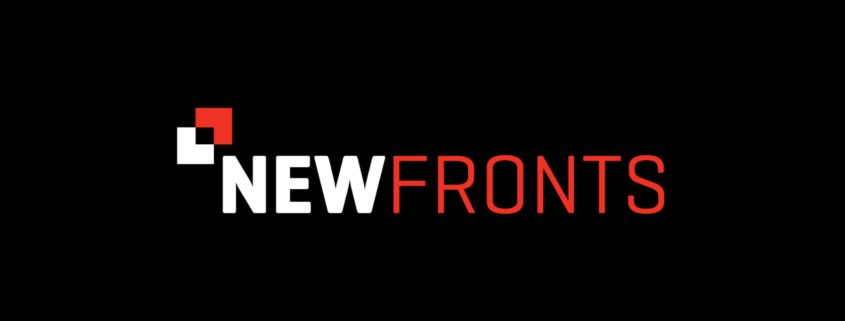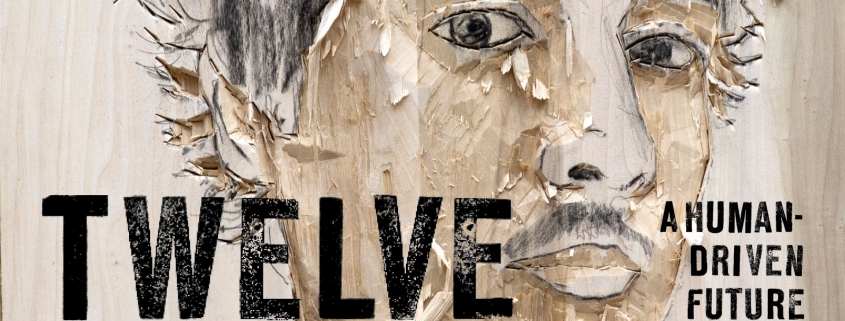The metaverse is one of the most exciting – if not the most exciting – innovations in our high-speed digital world. What prospects do companies in different countries see in this new digital universe? And what opportunities are they already using for their brands? Inspiring and surprising insights from the Netherlands, the UAE and Poland.
The metaverse in the Netherlands: A breeding ground for experimentation
Author: Christiaan van Betuw, Managing Partner / Serviceplan Group Netherlands
The digital era in which we find ourselves is characterised by its speed. From small, technical updates that make our lives easier, to large-scale, impactful transitions. The metaverse inexorably belongs to the latter category: a completely new, digital world with other forms of communication and a more intensive digital experience. It is important for brands to explore, test and learn now. And the Dutch market is the place to be.
This is due to the behaviour of Dutch people. For years we’ve been one of the European leaders in digital development. The digital mindset of the Dutch is impressive. For example, 96% of Dutch households have internet and 87% are online every day. The Dutch are at the top of the table when it comes to using online services, such as internet banking, watching digital TV, shopping, and making online (video) calls. In addition, we are very receptive to – and active in – emerging sectors such as e-sports, (digital/hybrid) events and game development.[1]
In 2021, the Netherlands were characterised by the European Union as a “Strong Innovator” in Europe: a country that scores well above average for its innovation efforts. In the period from 2016 to 2018, almost half of the companies in the Netherlands with more than 10 employees were innovative.[2] The advent of the metaverse has also stimulated and inspired the innovative nature of Dutch companies to push things forward.
In addition to a receptive test group and an innovative workforce, the Netherlands – home to ‘only’ 17 million people – offers a clear market and a relatively cheap environment to experiment with the metaverse. And that is already happening on a large scale.
Dutch brands are pioneering the metaverse
More and more brands are testing the power of communication in the metaverse and offering consumers a unique brand experience. Heineken brought – albeit with a hint of fun-poking irony – the physical and digital world together with the launch of the world’s first virtual beer ‘Heineken Silver’ in Decentraland, as well as in the physical world. In doing so, the brand cleverly uses the Heineken experience in the metaverse, but with the clear message that it is still better to drink a beer in the ‘real’ world.[3]
Dutch fashion brand Barki has launched an NFT design but also makes a physical edition of each NFT. The brand states that this prevents the physical T-shirt from depreciating in value and eventually being thrown away. By linking the physical product to the NFT, it retains its value.[4] The same applies to Subway and Lay’s who, in collaboration with fashion brand XPLCT, developed an eye-catching jacket that made avatars in Decentraland look completely on brand. Five unique NFTs were developed, one of which was auctioned, raising €6,000 in proceeds.
It is striking that a ‘phygital’ approach is still often chosen, where brands experiment within the metaverse but also link the physical world to it at the same time. In the near future, the latter will become less so, partly due to companies that focus on full use of the metaverse, such as Dutch initiative Odyssey, which builds interoperable tools for metaverse users.[5]
A long-term goal for the brand in Web 3.0
At the rate the metaverse is evolving, a sustainable marketing effort – one that builds for the future – is an absolute must. And experimentation is inextricably linked to this. I am sure that in a world where everything is faster and grander than ever before, the marketer who dares to make a plan for 2027 will ultimately work for the brand that shapes the market rather than merely following it. That’s especially true when it comes to building a brand in Web 3.0. Let everything you do now contribute to that snowball that defines this future of the brand. The Netherlands look forward to welcoming you.
[1] https://longreads.cbs.nl/ict-kennis-en-economie-2021/samenvatting/
[2] https://longreads.cbs.nl/ict-kennis-en-economie-2021/samenvatting/
[3] https://www.prnewswire.com/nl/persberichten/heineken-r-silver-breaks-out-of-the-metaverse-877176528.html
[4] https://fashionunited.nl/nieuws/business/nederlands-label-barki-is-straks-in-winkels-en-in-de-metaverse-te-vinden/2022021152646
[5] https://www.emerce.nl/nieuws/nederlands-odyssey-vangt-vier-miljoen-uitbouw-metaverse
The UAE – a place of metaverse leadership
Author: Helmi Abdalhadi, House of Gaming Manager / Serviceplan Middle East
I recall a conversation with a friend a few years back when we were discussing cryptocurrencies. He mentioned that withdrawing assets in bits and pieces helped avoid German regulatory tax on the crypto-turned-cash. I remember instantly thinking, especially given my regulatory law education, that it was innovative and risk-averse of the German government to be ahead of new technology by putting these laws in place early. I now live in a part of the world where government activities and initiatives are central to the economy and its industries’ activities. The United Arab Emirates government has taken steps, measures and regulations further than most countries in the world to put itself in a position to both lead Web 3.0 and metaverse conversations, as well as enable its native businesses. However, even before regulations, it has made it part of its DNA.
In the second quarter of 2018, the UAE government announced and launched an initiative that “aims to capitalise on the blockchain technology to transform 50% of government transactions into the blockchain platform by 2021”. The Emirates blockchain strategy had a simple goal: to use the secure technology to be much more efficient in day-to-day activities. By giving each transaction and customer a unique identification number that is part of the blockchain ledger, the government aimed to save 400 million printed documents and 77 million work hours annually, as well as almost $3 billion by 2021.
Regulations usually imply a negative connotation for new technology. This is not the case for the metaverses’ main method of payment – cryptocurrencies – in the UAE. Dubai and Abu Dhabi both passed laws in 2021 and 2022 that make it not only easier to use cryptocurrency to make payments for daily purchases, but also possible for crypto exchanges to operate from and within the two Emirates. According to Reuters, over 30 licences have been issued to crypto exchanges to set up shop – including the biggest of the bunch: FTX, Binance and Kraken. As an example, Binance are currently hiring for over 100 positions in the UAE region.
But being ahead of new technology doesn’t just mean regulating and
managing. It is also about enabling and building a healthy ecosystem around the
industry.
Dubai recently created a committee whose purpose is to build a metaverse strategy for the Emirate. Whether through commerce and shopping, meeting places and social areas, games or learning environments, the committee announced that it will be supporting 42,000 virtual jobs in order to add $4 billion to the country’s GDP by 2030. Resource allocation towards the virtual world, as well as enabling new businesses are key pillars of the Dubai metaverse committee.
In the meantime, Abu Dhabi has pushed for diversity in the male-dominated industry via its Abu Dhabi investment office. ADIO is making it easier for women to be entrepreneurial in the metaverse and Web 3.0 space by giving them free crypto and metaverse domains. This has proven successful. Over 50% of small to medium businesses in this industry in Abu Dhabi were founded by women.
These laws and initiatives have put the UAE in a place of metaverse leadership. They have not only enabled the growth of related start-ups, but also incentivised legacy brands to get involved. At Serviceplan Middle East, we were approached by our client BMW within the past year with a view to taking advantage of the local Web 3.0 facilitation. We created an NFT project called BMW Museum of Sounds, storing and displaying the roars of retired BMW M engines via NFTs. And we won multiple awards and nominations for our efforts.
Regulating technology is not easy and regions that fail to act usually fall behind – but by pushing regulations and encouraging innovation, the UAE are in no danger of making this mistake.
The metaverse in Poland
Author: Tomasz Przeździecki, Chief Executive Officer / _game changer
It’s a popular phenomenon that millions of Poles are already into. But do they really know about it? Many years of experience clearly show us that games are the best canvas for developing the metaverse and technology in the form of VR and AR. Back in 2017, we carried out activities for our clients (Subway and Coca Cola) in Minecraft, which we can now classify as metaverse projects. Thank you, Mark Zuckerberg!
The concept of the metaverse is one and the same for all – virtual, open, interactive, 3D worlds where players/users can socialise. However, right now there are dozens of different platforms – Roblox, Decentraland, Wave, Ceek, Zepeto, RECRoom, etc. In a few years’ time, we will be seeing global consolidations. Will Facebook, Amazon, or perhaps a new player be leading the market?
For the past few years, it has been a well-known fact that popular games like Minecraft or Roblox are classified as centralised metaverse platforms.
However, the real, futuristic metaverse using Web 3.0 ideology – based on blockchain tech – is considered decentralised. Right now, the key players among those metaverse platforms are Decentraland and Sandbox. Those are the best platforms within Web 3.0, where you can read, write, create and OWN! Where you can purchase land, build your business and possibly make money. And also where you can create art and sell it. But bear in mind that they are still in their infancy, both globally and locally.
The users of the metaverse originating from games like Roblox, Minecraft or Fortnite are younger, usually between 10 and 20 years old. Those who are aware of Web 3.0 are mainly aged 20+.
However, everyone can refer to themselves as users of the metaverse. We should remember not to look at the metaverse only through the prism of games, as this can be harmful. We think along the lines of: “A game can be a metaverse, but the metaverse does not have to be a game”.
Perspective of a Polish metaverse user
Based on the first Polish report on metaverse users in Poland (conducted by the Gameset gaming and metaverse marketing agency), we know that:
- 4.3 million Poles perceive themselves as aware users of the metaverse in Poland.
- 7.1 million Poles do not participate in the metaverse but would like to.
- 29% of respondents stated that they do not want to be in the metaverse. However, most of them (51%) were between 46 and 66 years old. They consider it a waste of time and prefer other types of leisure activity instead.
Among the most attractive aspects of the metaverse, respondents indicated:
- The opportunity to meet with friends (83%)
- The chance to meet new people (81%)
- The possibility of creating new things in this world such as “clothes, art, games” (81%)
- The opportunity to look the way you want to (79%)
The top four metaverse platforms indicated by respondents are games:
Minecraft – 83%
Roblox – 66%
GTA Online – 63%
Fortnite – 63%
Roblox in Poland has over two million monthly active users!
So where is Decentraland or Sandbox? Very much on the sidelines – for the moment! So far, they generate around half a million monthly active users globally. We estimate that only 3% of them are Polish users. In the future, that is likely to change in favour of decentralised platforms (once the awareness and education of blockchain increases).
What about brands in the metaverse?
- 32% of respondents aged between 10 and 55 years old say they would welcome the presence of brands in the metaverse, while 41% say “it depends”.
- 47% of respondents say they have discovered new brands or services through the metaverse.
- 39% say they would be willing to buy an offline product from a brand they have interacted with in the metaverse.
- 43% of respondents expect their favourite brands to be represented in the virtual world.
To sum this up:
YES – your brand should also be represented in the metaverse!
YES – you need to do this as soon as possible, as long as it’s relatively easy, cheap and there’s no clutter.
YES – your target group is already there and it’s just a matter of months until everything is happening on a much larger scale, but will you be able to afford it by then?
That’s why _game changer was created – because it changes the rules of gaming in marketing and communication and is the answer to marketers’ needs for activities in trending channels.
The kind of world you create for your brand depends mostly on the technology and platform you choose. In Poland and around the world, most activities right now are centred around Roblox, Decentraland and Sandbox, so you’d be well advised to focus on those!
This interview first appeared in TWELVE, Serviceplan Group’s magazine for brands, media and communication. Read more exciting articles, essays and interviews by and with prominent guest authors and renowned experts in the ninth issue under the central theme “Speed! The Winning Factor in the Digital Age“: https://sp-url.com/twelve23-lp-en.















